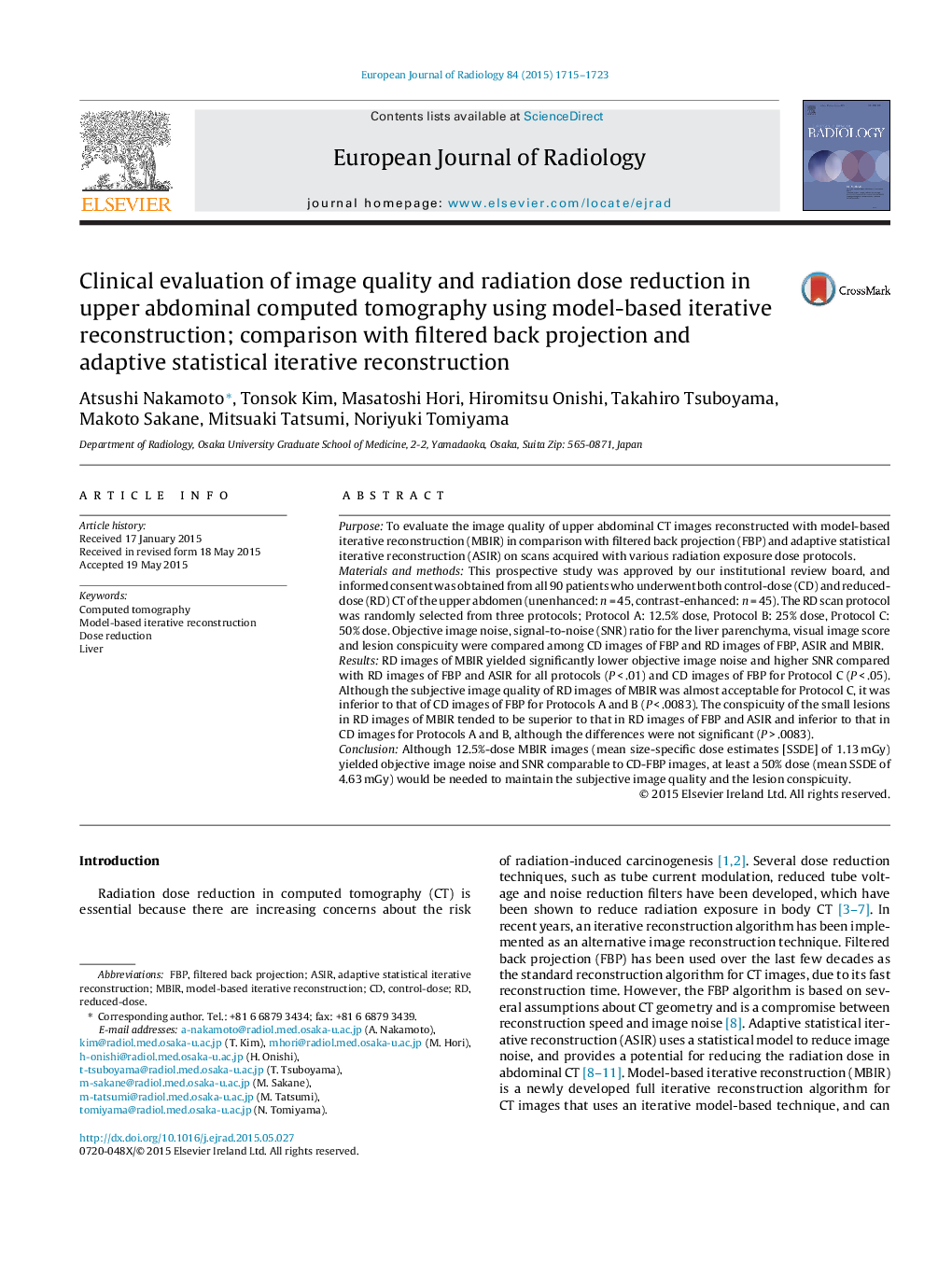| کد مقاله | کد نشریه | سال انتشار | مقاله انگلیسی | نسخه تمام متن |
|---|---|---|---|---|
| 4224949 | 1609750 | 2015 | 9 صفحه PDF | دانلود رایگان |
• MBIR significantly improves objective image quality.
• MBIR reduces the radiation dose by 87.5% without increasing objective image noise.
• A half dose will be needed to maintain the subjective image quality.
PurposeTo evaluate the image quality of upper abdominal CT images reconstructed with model-based iterative reconstruction (MBIR) in comparison with filtered back projection (FBP) and adaptive statistical iterative reconstruction (ASIR) on scans acquired with various radiation exposure dose protocols.Materials and methodsThis prospective study was approved by our institutional review board, and informed consent was obtained from all 90 patients who underwent both control-dose (CD) and reduced-dose (RD) CT of the upper abdomen (unenhanced: n = 45, contrast-enhanced: n = 45). The RD scan protocol was randomly selected from three protocols; Protocol A: 12.5% dose, Protocol B: 25% dose, Protocol C: 50% dose. Objective image noise, signal-to-noise (SNR) ratio for the liver parenchyma, visual image score and lesion conspicuity were compared among CD images of FBP and RD images of FBP, ASIR and MBIR.ResultsRD images of MBIR yielded significantly lower objective image noise and higher SNR compared with RD images of FBP and ASIR for all protocols (P < .01) and CD images of FBP for Protocol C (P < .05). Although the subjective image quality of RD images of MBIR was almost acceptable for Protocol C, it was inferior to that of CD images of FBP for Protocols A and B (P < .0083). The conspicuity of the small lesions in RD images of MBIR tended to be superior to that in RD images of FBP and ASIR and inferior to that in CD images for Protocols A and B, although the differences were not significant (P > .0083).ConclusionAlthough 12.5%-dose MBI
Journal: European Journal of Radiology - Volume 84, Issue 9, September 2015, Pages 1715–1723
